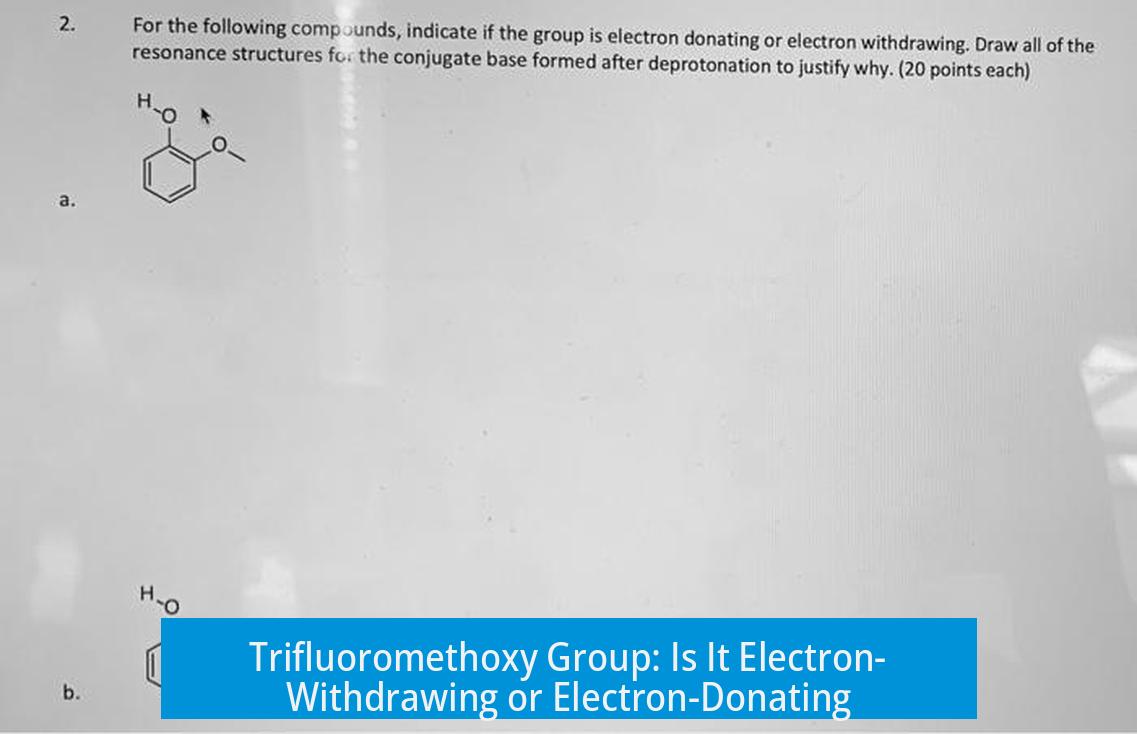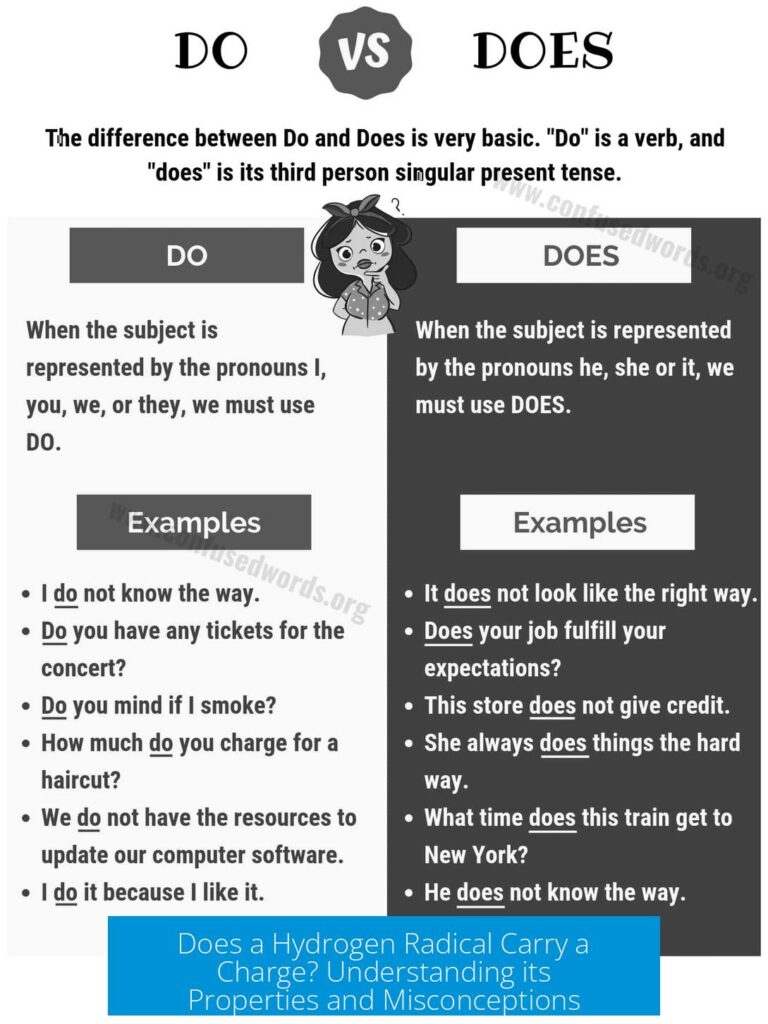Trifluoromethoxy Group: Electron-Withdrawing or Electron-Donating?
The trifluoromethoxy (-OCF3) group is fundamentally an electron-withdrawing substituent, mainly due to strong inductive effects of its fluorine atoms, despite possessing some pi-donating resonance capacity through the oxygen atom. This dual nature affects its chemical behavior, particularly in aromatic substitution reactions, making it an ortho/para director but generally a deactivating group. The balance between electron donation and withdrawal depends on the interplay of sigma and pi contributions, with experimental and theoretical data highlighting its overall withdrawing character.
1. Electron-Withdrawing Character of the Trifluoromethoxy Group
The trifluoromethoxy group exhibits strong electron-withdrawing properties, comparable to the trifluoromethyl (-CF3) substituent. Its fluorines exert a powerful inductive effect, pulling electron density away through sigma bonds.
- The electronegativity of fluorine atoms strongly polarizes bonds within the -OCF3 group.
- This polarization withdraws electron density from the attached aromatic system.
- As a result, the aromatic ring bearing -OCF3 becomes electron-poor, though less so than a ring with direct -CF3 substitution.
According to Chemical Reviews (1991), the trifluoromethoxy substituent matches trifluoromethyl in electron-withdrawing strength by induction. This is consistent with the known strong electronegativity of fluorines that dominate the substituent’s behavior.
2. Dual Nature: Pi-Donating and Sigma-Withdrawing Effects
The -OCF3 group displays a complex electronic profile. It has lone pairs on the oxygen atom, which can participate in resonance (pi-donation) with the aromatic ring. Simultaneously, the highly electronegative CF3 group exerts a sigma-withdrawing effect via the C–O bond.
| Electronic Effect | Mechanism | Impact on Aromatic Ring | Comparison |
|---|---|---|---|
| Pi-Donating | Lone pairs on oxygen delocalize electron density into ring | Ortho and para positions are favored in substitution reactions | Similar to halogens’ resonance donation |
| Sigma-Withdrawing | Electron density pulled away through sigma bond from ring to CF3 | Overall electron density of ring decreased; reaction slowed | Strong inductive withdrawal akin to -CF3 |
This dual phenomenon aligns the trifluoromethoxy group’s behavior closely with that of halogens, which are known pi-donors and sigma-withdrawers. Consequently, -OCF3 is ortho/para director but acts as a weak to moderate deactivator that slows electrophilic aromatic substitution reactions.
3. Structural Influence on Electronic Effects
The spatial orientation of the trifluoromethoxy substituent also impacts its electronic behavior. The -OCF3 group prefers an orthogonal (non-coplanar) conformation relative to the aromatic ring.
- This contrasts with methoxy (-OMe) groups, which generally adopt an in-plane configuration to maximize resonance.
- Orthogonality limits the extent of resonance donation from oxygen lone pairs to the ring.
- Greater orthogonality enhances the dominance of the sigma-withdrawing inductive effect.
The carbon–oxygen bond connecting the ring and CF3 encourages polarization, increasing the ionic character within the bond framework and amplifying electron withdrawal. This orientation reduces the mesomeric (resonance) effect compared to simpler alkoxy groups.
4. Ambiguities and Variability in Electron-Donation vs. Withdrawal
Scientific accounts vary regarding the net electron effect of -OCF3. Some observations indicate it may weakly donate electron density due to resonance, while others confirm its dominant electron-withdrawing inductive effect.
“Pi donating but electron withdrawing” reflects this dualism. Some claim mesomeric donation overshadows inductive withdrawal in certain contexts.
Variability depends on the specific system and experimental conditions. Additional substituents, solvent effects, and ring substituent interactions can influence the overall electronic impact. Confirming this requires:
- Computational chemistry calculations to assess electron density distributions.
- Experimental studies through electrophilic aromatic substitution kinetics.
- Comparison with related groups such as -OCF2H or -CF3.
5. Implications for Aromatic Substitution
In electrophilic aromatic substitution reactions, the trifluoromethoxy group directs incoming electrophiles to ortho and para positions due to resonance effect from oxygen’s lone pairs. However, its strong inductive withdrawal makes the ring less reactive overall.
- Reactions often proceed more slowly than with electron-donating groups.
- The directing effect influences regioselectivity, favoring positions adjacent or opposite to the substituent.
- Net effect can be seen as weak-moderate deactivation coupled with ortho/para orientation.
This behavior resembles that of halogens, which also combine moderate resonance donation with inductive electron withdrawal, and affect reaction rates and positions accordingly.
6. Comparative Overview with Related Groups
The trifluoromethoxy group’s electronic characteristics can be better understood by comparing it to structurally or electronically related substituents:
| Group | Inductive Effect | Resonance Effect | Aromatic Substitution Behavior |
|---|---|---|---|
| -CF3 | Strong electron-withdrawing | Negligible resonance | Meta directing, strong deactivator |
| -OCF3 | Strong electron-withdrawing | Weak pi-donating | Ortho/para directing, weak-moderate deactivator |
| -OMe | Weak electron-withdrawing (sigma) | Strong electron-donating (pi) | Ortho/para directing, strong activator |
| Halogens (F, Cl, Br) | Moderate electron-withdrawing | Moderate pi-donating | Ortho/para directing, weak deactivators |
This comparison shows the trifluoromethoxy group as a hybrid substituent with unique properties, favoring electron withdrawal but maintaining some resonance-driven directional selectivity.
7. Experimental and Theoretical Context
Given conflicting literature reports and the nuanced electronic interplay, a conclusive assignment benefits from combined approaches:
- Theoretical calculations: Quantum chemical computations help evaluate electron density distribution, bond polarization, and orbital interactions.
- Reaction kinetics: Measuring rates and regioselectivities of electrophilic substitutions provides practical insight into activating/deactivating effects.
- Comparative studies: Synthesizing related compounds such as Ph-OCF3 and Ph-OCF2H affords deeper understanding of substituent influence on reactivity.
Recent literature, including studies published in Nature Communications and various chemical journals, offers detailed theoretical models and experimental data to elucidate this complex behavior.
Key Takeaways
- The trifluoromethoxy (-OCF3) group is primarily an electron-withdrawing substituent through strong inductive effects of fluorines.
- It exhibits pi-donating resonance due to oxygen’s lone pairs but this effect is weaker and limited by molecular conformation.
- -OCF3 is ortho/para directing but overall decreases ring reactivity, acting as a weak to moderate deactivator in aromatic substitution.
- Its electronic behavior resembles halogens, combining sigma withdrawal with modest pi donation.
- Molecular orientation (orthogonal vs. planar) affects resonance capability, reducing electron donation compared to methoxy (-OMe) groups.
- Ambiguities exist in literature; theoretical and experimental studies are recommended for confirmation.
Is the trifluoromethoxy (-OCF3) group electron-withdrawing or electron-donating?
It is primarily electron-withdrawing due to strong inductive effects of the fluorines. However, it also has pi-donating character via lone pairs on oxygen.
How does the trifluoromethoxy group affect aromatic substitution?
-OCF3 directs substitution to ortho and para positions but slows the reaction overall. It acts as a weak to moderate deactivator while still being ortho/para directing.
Why is the trifluoromethoxy group both pi-donating and sigma-withdrawing?
The oxygen’s lone pairs allow resonance donation (pi-donation). Meanwhile, electron density is pulled away through the sigma bond towards the electronegative CF3 group, causing sigma-withdrawal.
How does -OCF3 compare structurally and electronically to -OMe or halogens?
-OCF3 prefers an orthogonal position relative to the aromatic ring, unlike -OMe which is planar. Electronically, it resembles halogens that are pi-donating but sigma-withdrawing.
Is there consensus on the net electronic effect of the trifluoromethoxy group?
No clear consensus exists. Some reports note weak electron donation while most confirm its electron-withdrawing nature. Experimental and computational studies are recommended for precise evaluation.





Leave a Comment